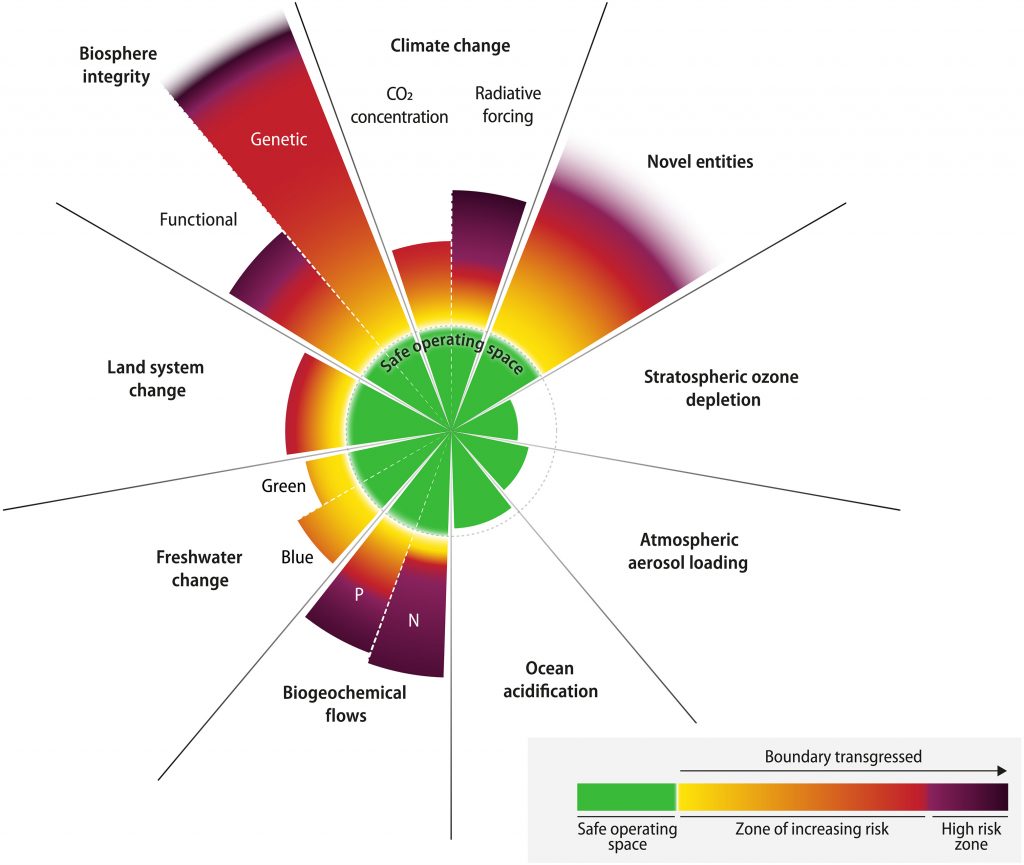Janet Stephenson
When we’re in new territory we often have to coin new words. ‘Planetary boundaries’ is a recent term that describes the biophysical and biochemical systems that keep Earth in the state that has enabled humans to emerge and thrive. We haven’t had to think about this before – it has just been a given. It isn’t any longer.
The idea of planetary boundaries was first introduced by Johan Rockström, WIll Steffan and others in 2009. They proposed nine quantitative aspects that together strongly influence the integrity of Earth’s biophysical functioning. The ‘boundaries’ idea refers to points beyond which the biophysical systems would be so seriously altered that Earth could no longer be considered a ‘safe operating space’ for humanity.
In 2009, they concluded that three boundaries (climate change, the rate of biodiversity loss, and the rate of interference with the nitrogen cycle) had been transgressed.
The most recent (2023) paper is, to put it frankly, terrifying. The figure below, from the paper, shows that six of the nine boundaries have now been transgressed (and are worsening), and two more boundaries are closer to transgression. For some of the measures, we are now in highly risky territory, as shown in the figure from the 2023 paper below. And because Earth’s processes all interact, when one system starts to struggle, it affects others, with unknown consequences.

Planetary boundaries are just one way of presenting humanity’s current predicament. They are useful to convey a stark message about some of the physical impacts of modernity, but don’t tell us everything. There are many other aspects to planetary limits which we will discuss in later blogs. But even just this figure is enough to show us that humans are destroying the natural systems that their lives and livelihoods depend on.
Janet Stephenson is a research professor in social sciences and sustainability at the University of Otago, New Zealand
